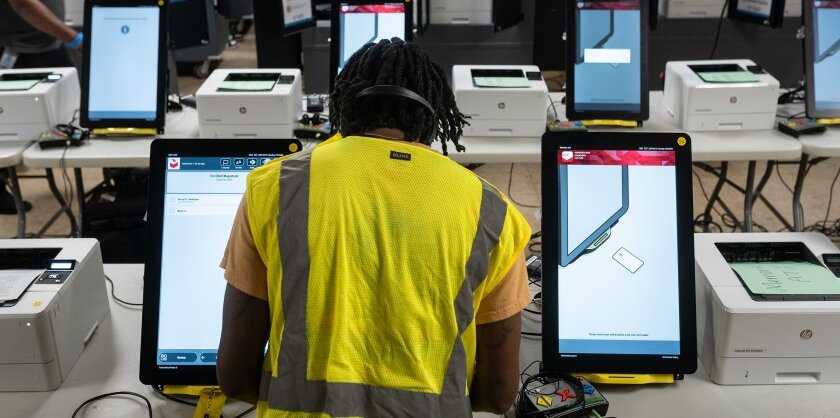News about cyberattacks — including those unrelated to voting — leaves even election winners with diminished confidence in the process. Education is key: It’s vital that voters understand how elections are run, how they're protected and how failures are caught and corrected.
Former Mayor Jenny Durkan’s phone settings were changed in July 2020 to delete texts after 30 days, and some texts with ex-Police Chief Carmen Best were periodically deleted.
An eye doctor from Cheektowaga, N.Y., filed a lawsuit when a cybersecurity company refused to cover his losses after someone hacked into his cryptocurrency account and stole $12 million.
With a high influx of COVID-related jobless claims, hackers found it easy to scam state unemployment benefit systems. But tracking down the illegitimate payments is a slow and frustrating process.
With $1 billion on the way from the new infrastructure law, state cybersecurity planning committees will need to be creative to fairly and uniformly distribute funds across diverse government landscapes.
Federal and state governments are turning to a facial recognition company to ensure that people accessing services are who they say they are. The move promises to cut down on fraud, but at what cost?
The Secretary of State’s office is now reviewing the actions of a third county clerk, Douglas County’s Merlin Klotz, for allegedly breaching election security protocols. The previous two clerks were from Elbert and Mesa counties.
The Illinois county’s eight-month review of a ransomware attack on its computer systems last spring has found that hackers may have been able to view or acquire personal or medical information on more than 600 residents and non-residents.
Police departments across the country suffered a slew of damaging ransomware attacks in 2021. The new year promised more of the same, but what should law enforcement agencies really be concerned with in 2022?
Experts worry that social media apps that have positioned themselves as right-winged alternatives, like Parler and Gab, may promote disinformation about the upcoming midterm elections, which could incite violence.
A proposed bill would amend the state constitution to include privacy as a natural right and would require that law enforcement obtain a warrant before searching or seizing electronic data or communications.
Thousands of people are protesting the state’s Board of Health for a plan to round up unvaccinated people and force them into quarantine facilities. But the plan isn’t real. It was created entirely from misinformation.
Too many government organizations cling to legacy ideas about owning and managing their technology. A centralized, enterprise IT environment provides better cybersecurity while creating vast efficiencies.
Tisch told colleagues she would keep serving the city under the Adams administration. Her departure comes as the city reportedly plans to reorganize its IT agencies and follows just weeks after CTO John Paul Farmer’s exit.
New research has found that federal law does not currently extend the security protections users receive over their phone’s personal data to modern vehicles, which often pull information from the driver’s phone.
In the two weeks following a cyber attack against the state’s Department of Health servers, more than 28,500 residents have tested positive. The system was taken offline as a precaution but not all data was restored immediately.
Most Read















